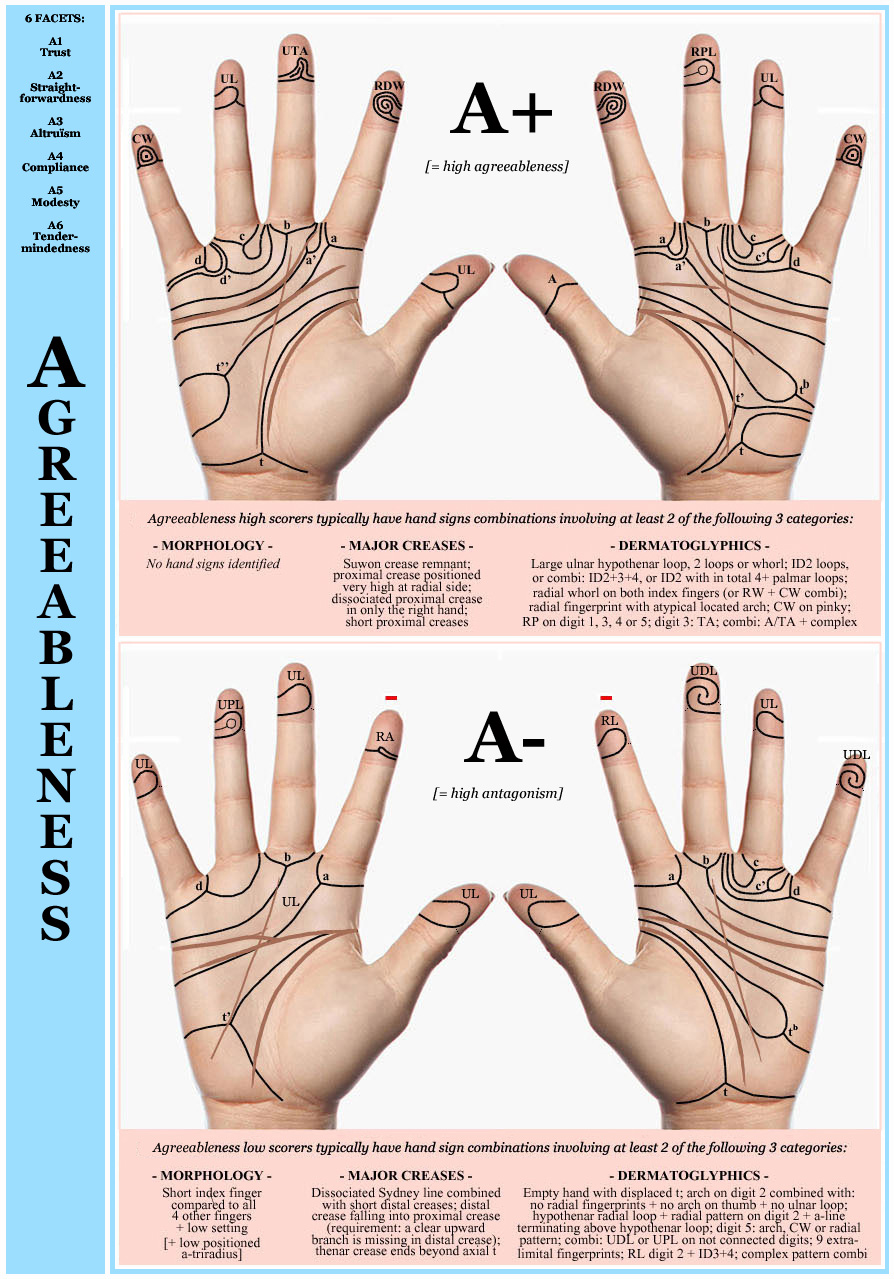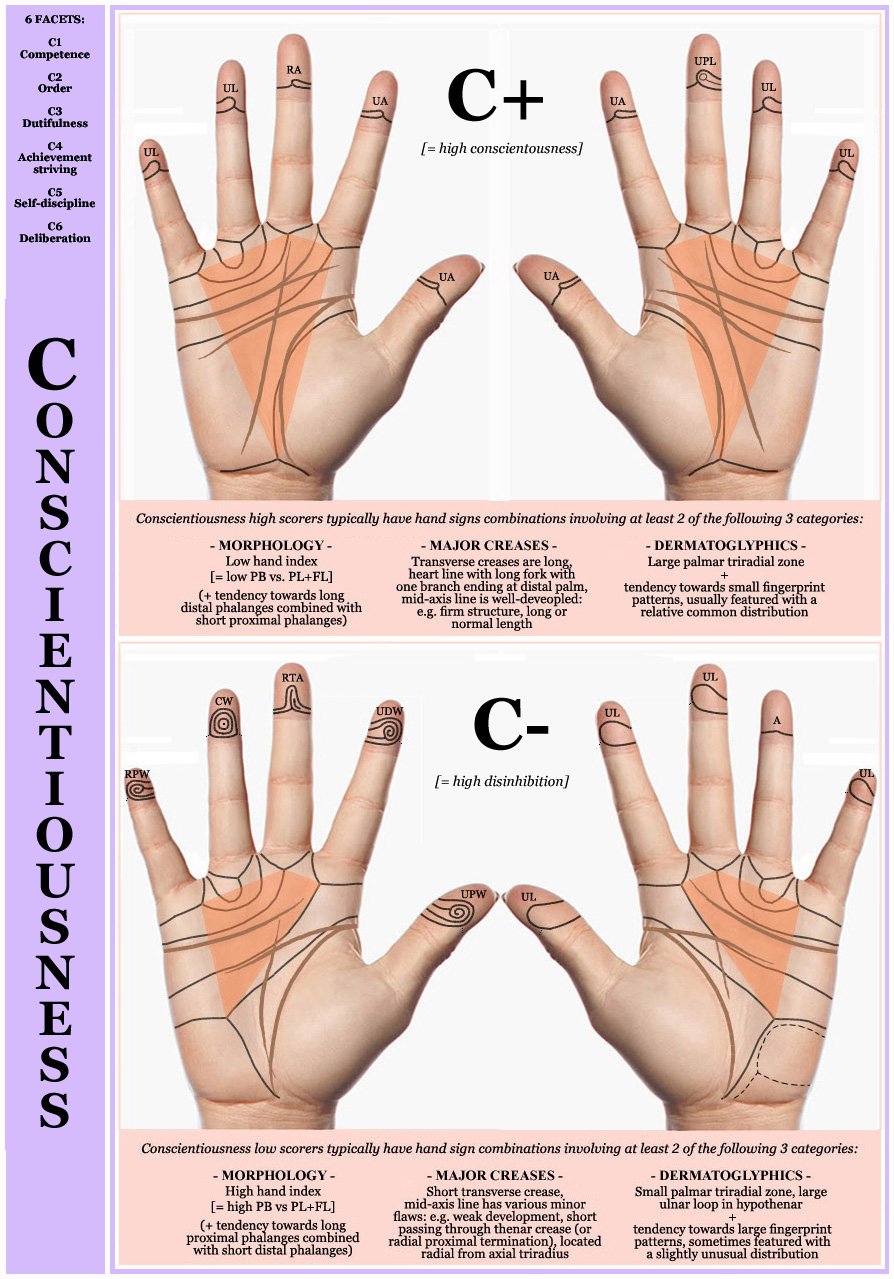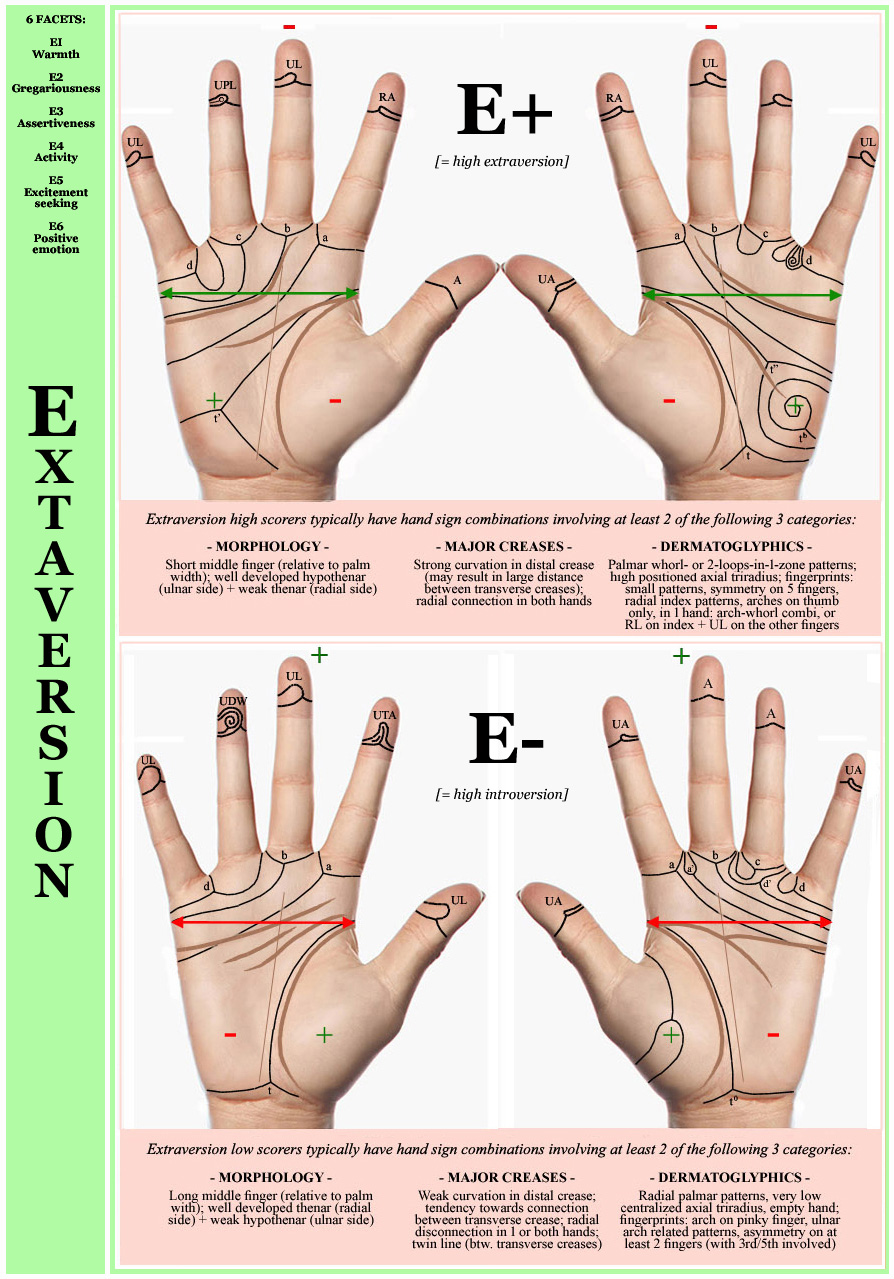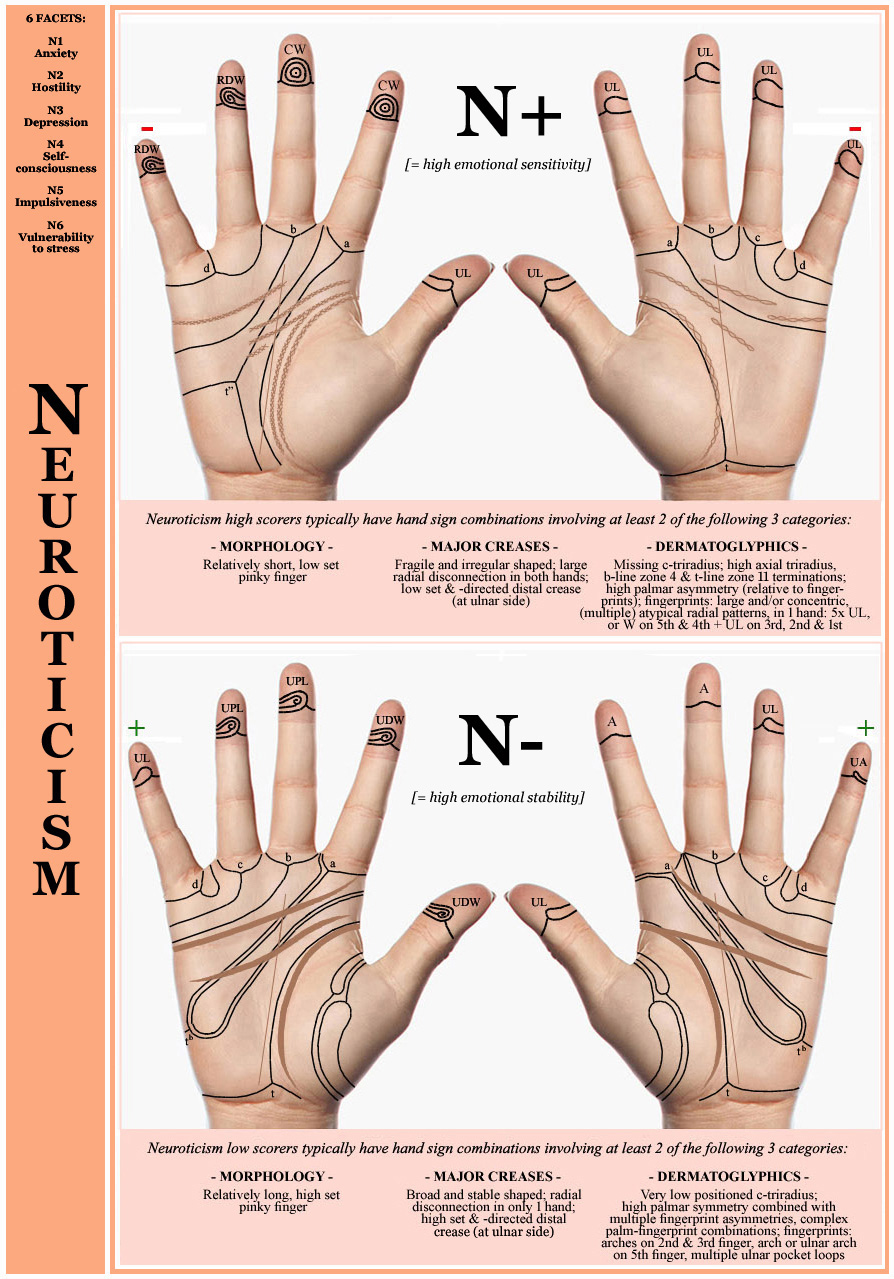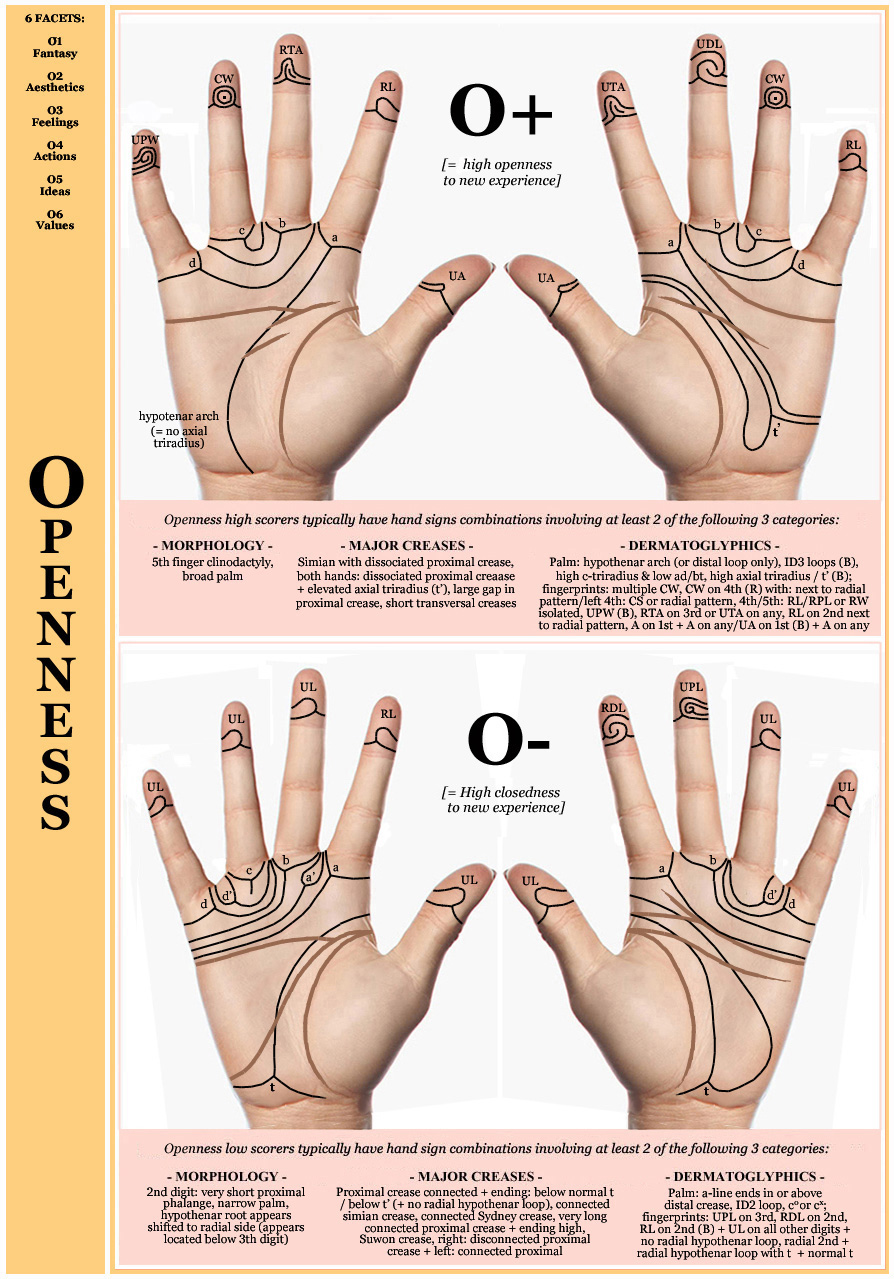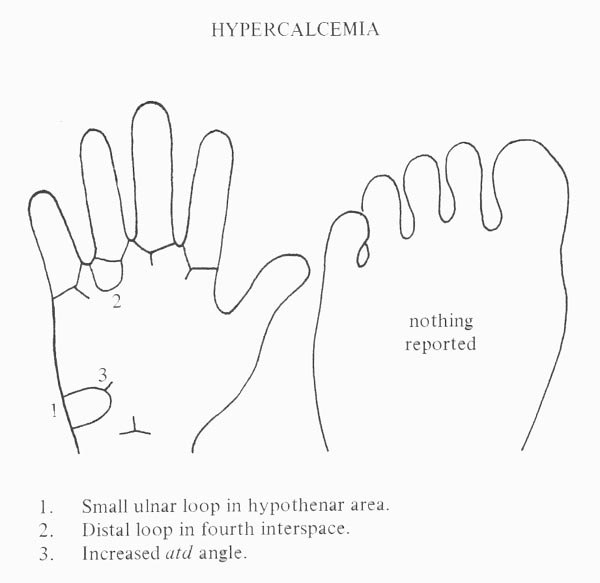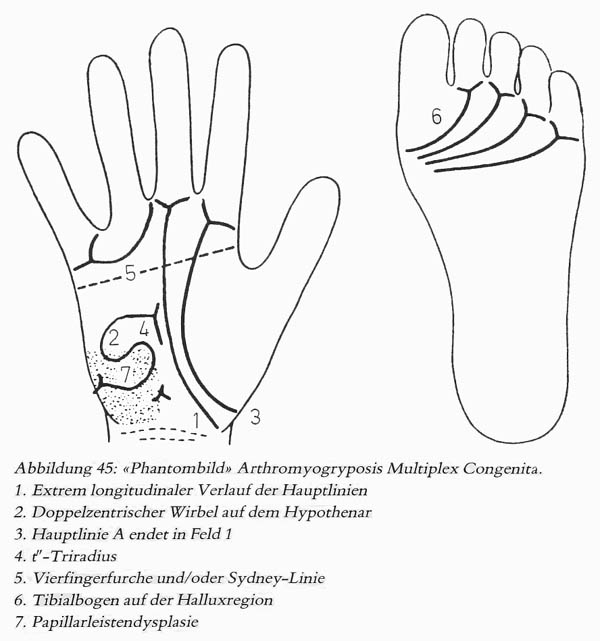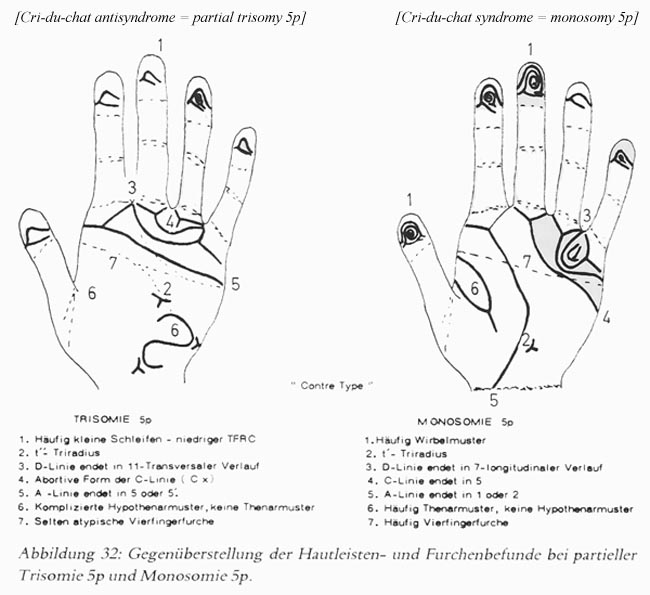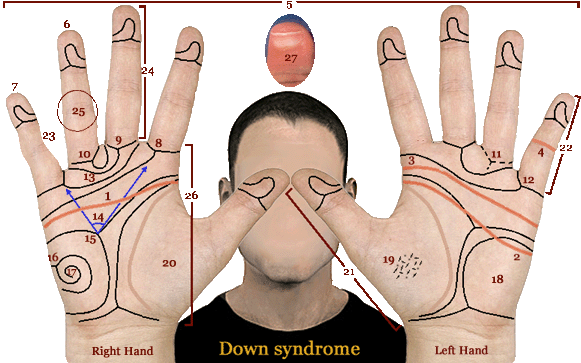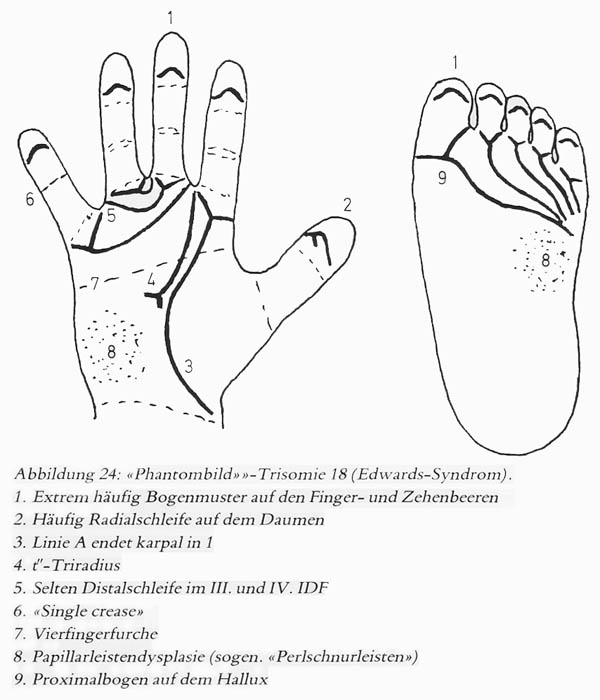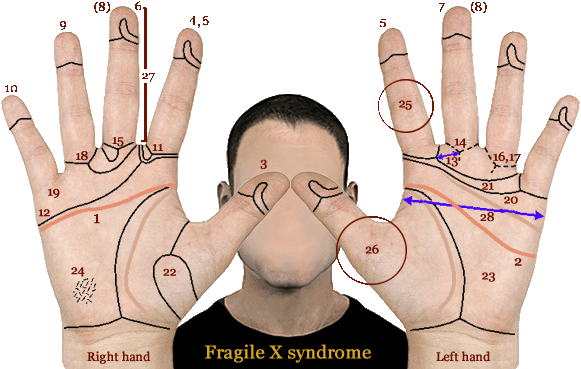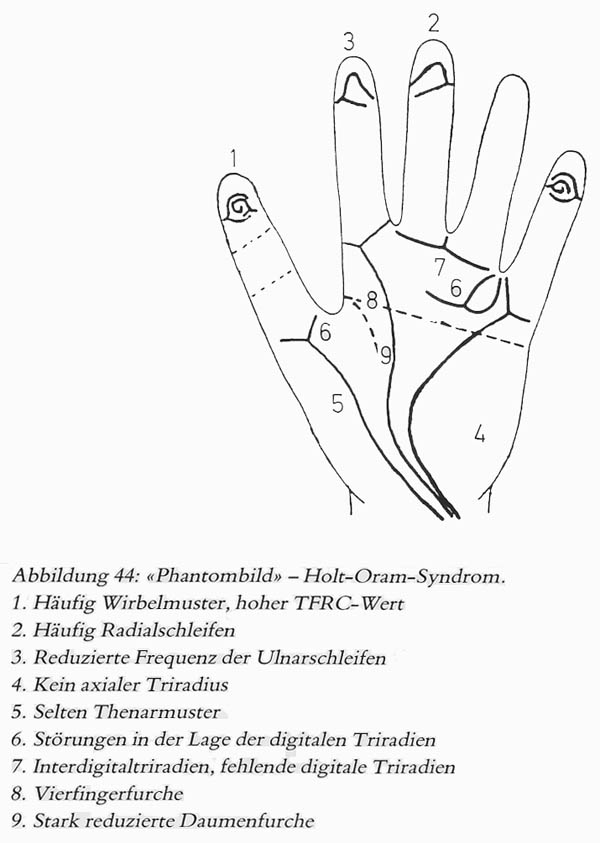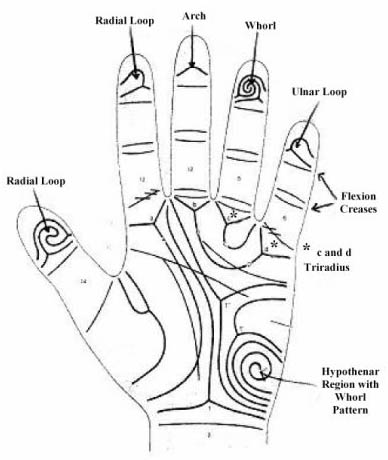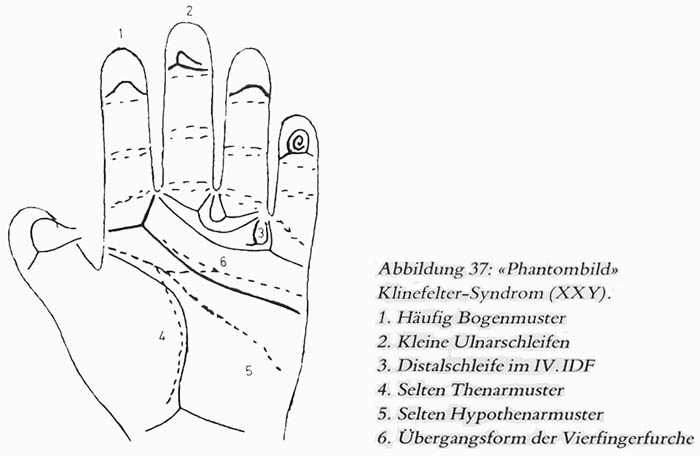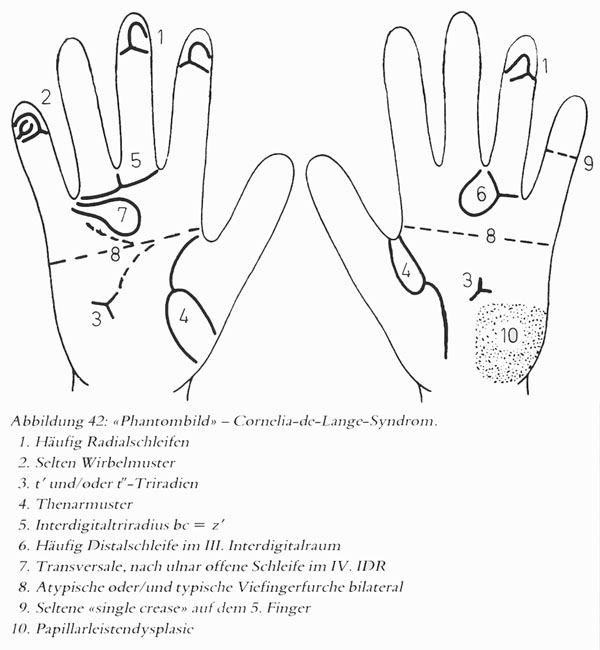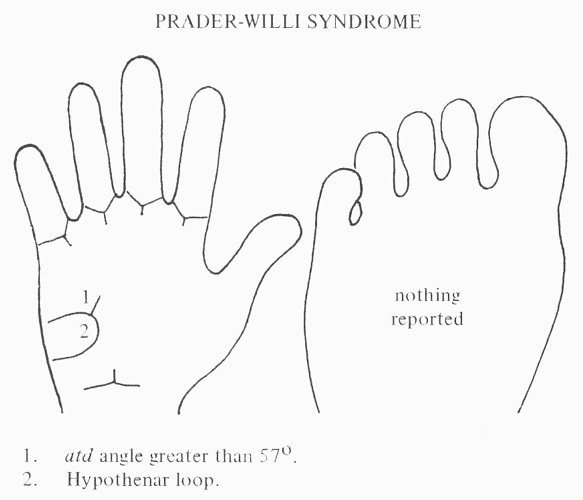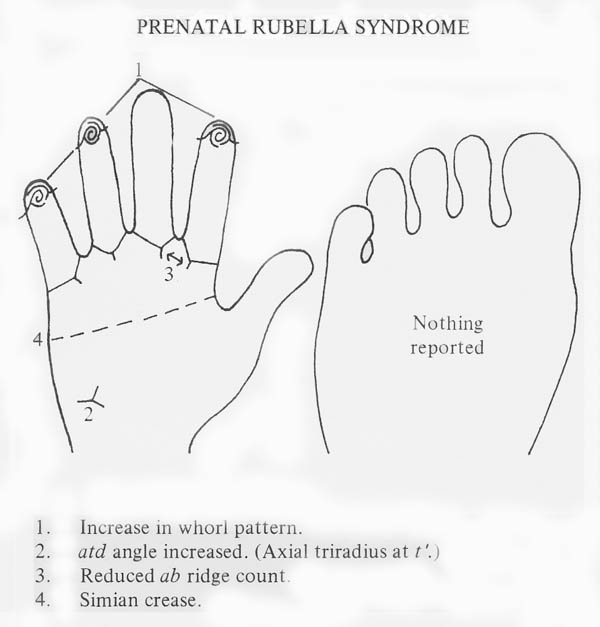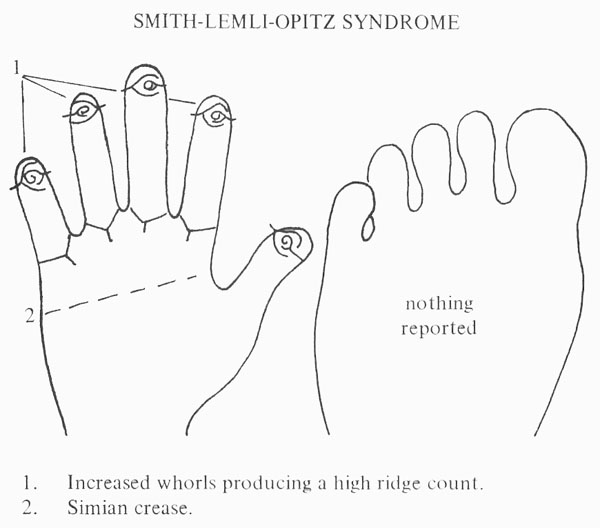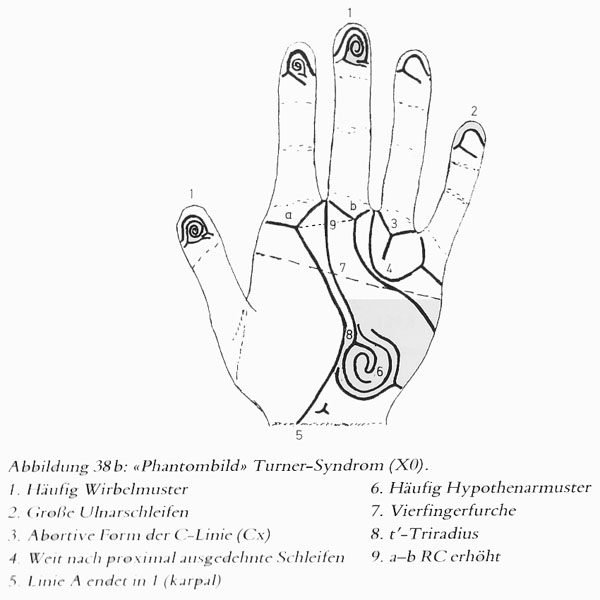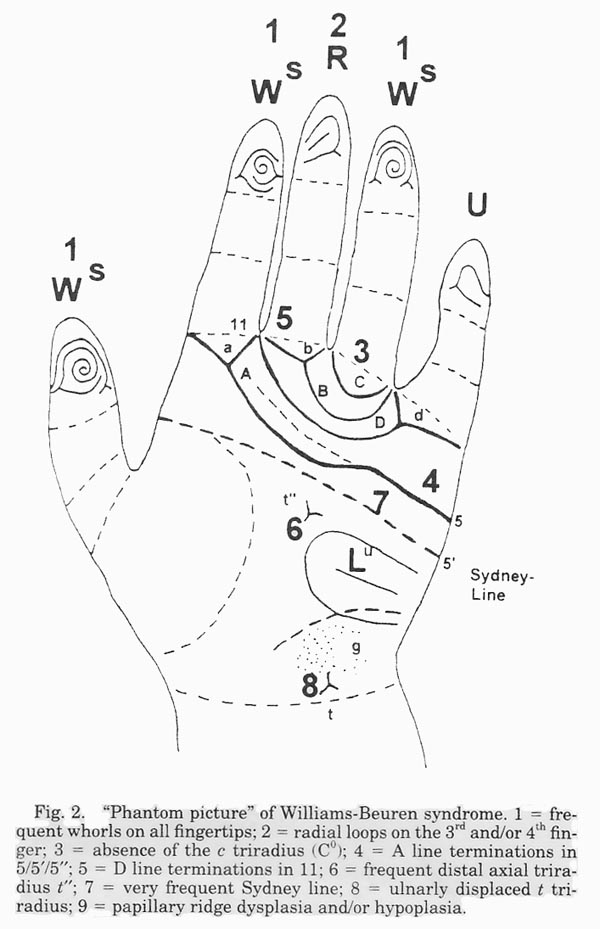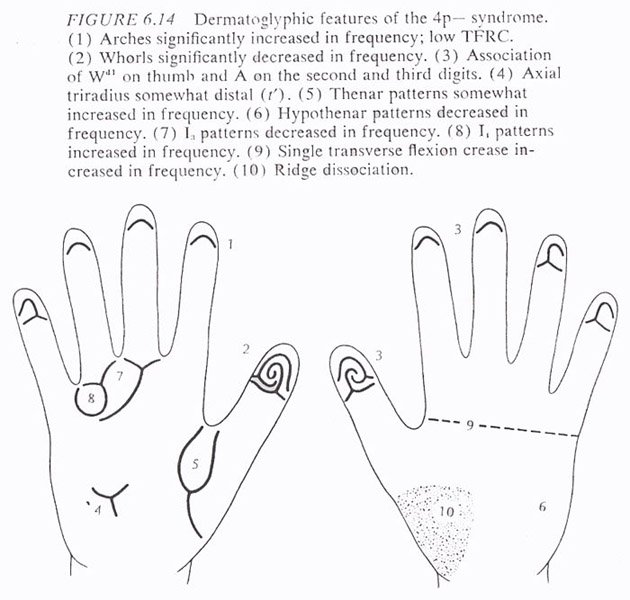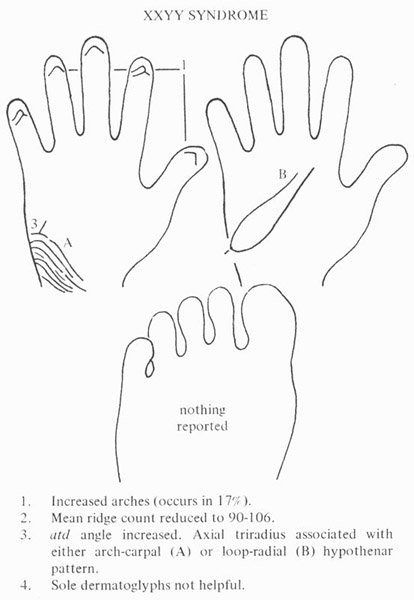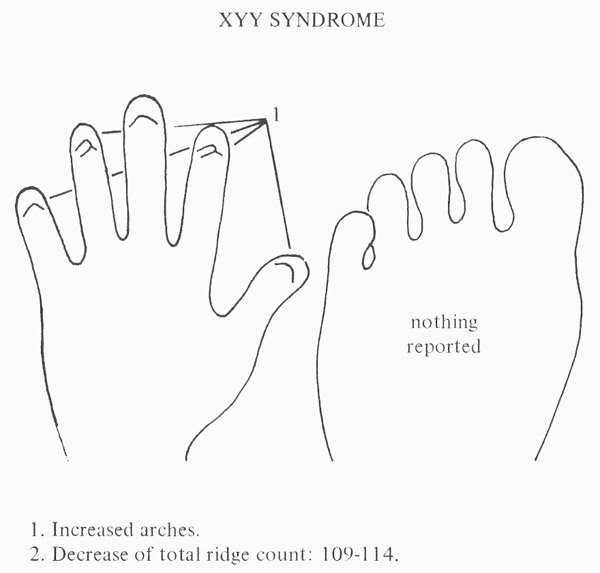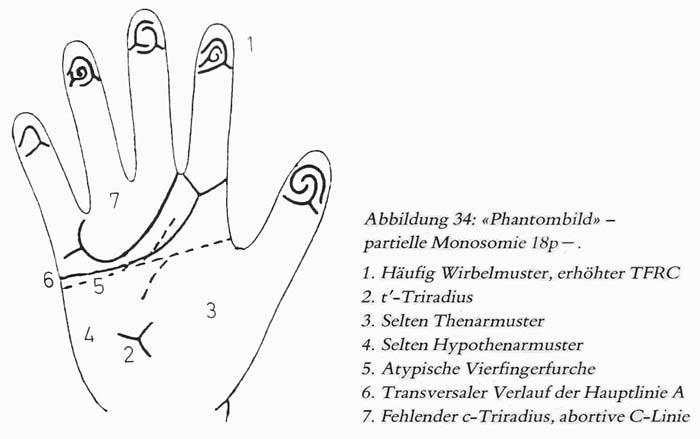
Scientific Hand Charts Collection:
Patau syndrome, a.k.a. trisomy 13
3 Hand Charts for Patau syndrome!
Edwards syndrome, also called trisomy 13 or trisomy D, is an chromosomal condition that causes severe birth defects in newborns; the median age for babies born with trisomy 13 is close to the age of 4.
Prevalence: estimated at 1 in 15,000 live births.
Quite a few detailed hand charts are available for Patau syndrome; most charts describe the significance of various typical features inside especially the dermatoglyphics, which manifest often combined with a simian line (= single transverse flexion crease).
NOTICE: Individual hand features described below should not get associated in isolation with any theme; only combinations involving multiple hand levels have potential for diagnostic purposes.
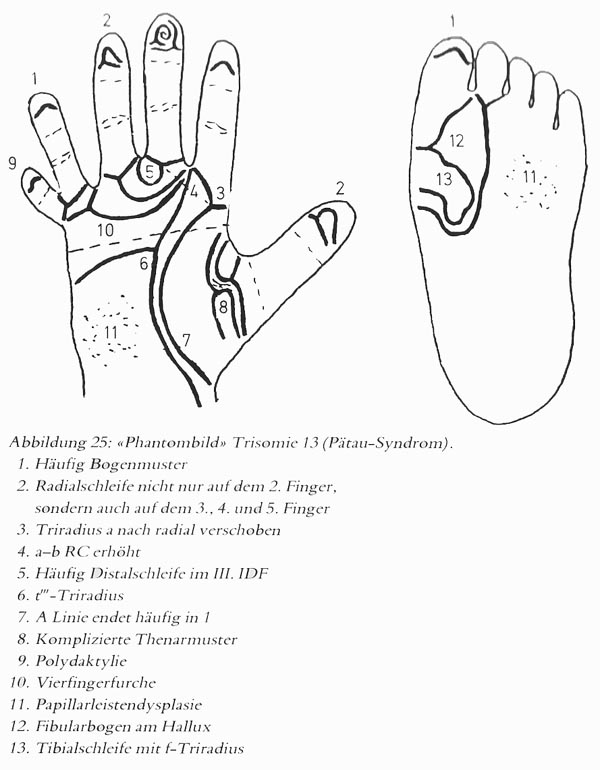
Hautleistenfibel (1981), p.64;
authors: A. Rodewald & H. Zankl
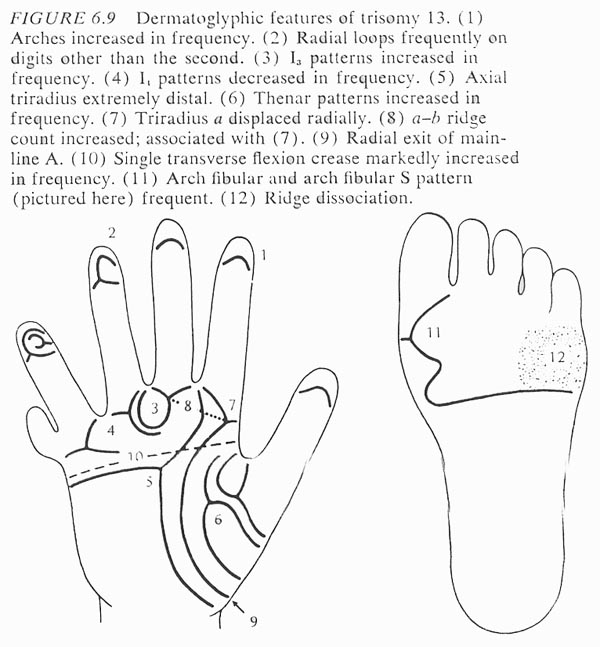
Dermatoglyphics in Medical Disorders (1976), p.167;
authors: B. Schaumann & M. Alter
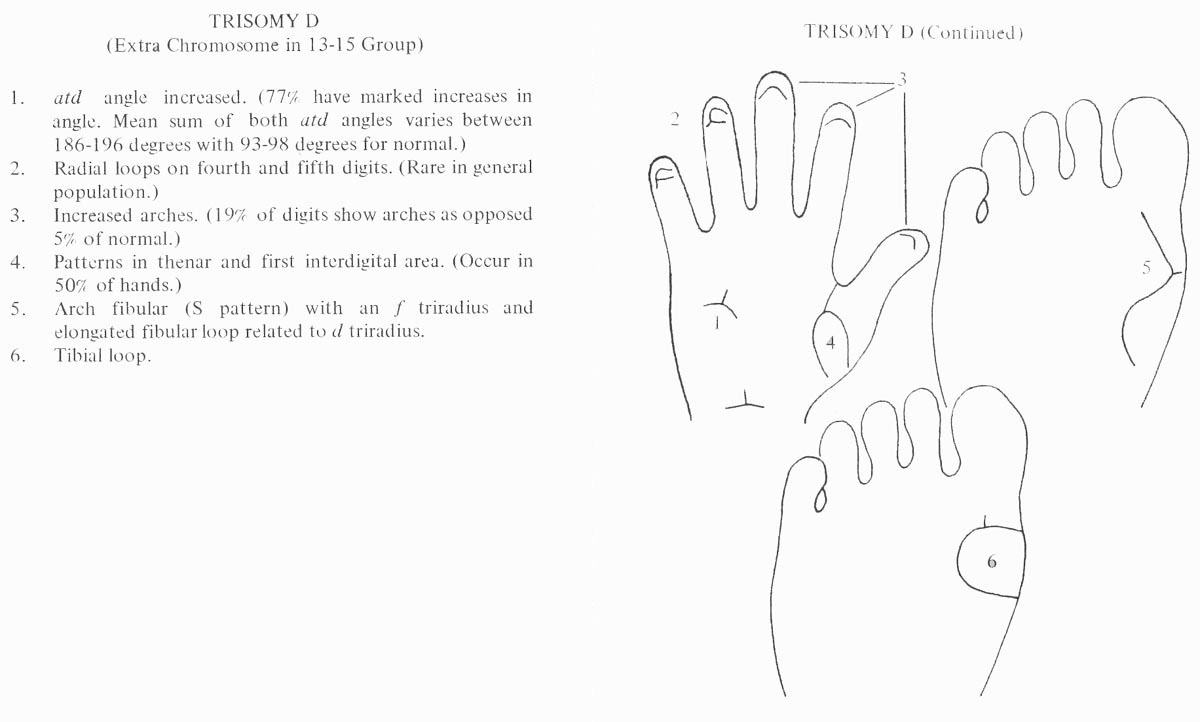
Handbook of Clinical Dermatoglyphs (1971), p.34+35;
authors: M.S. Elbualy & J.D. Schindeler
Other significant hand signs (not reported inside the hand charts):
Small hands, as well as wide and short hands with short fingers belong to the most common physical signs in Patau syndrome (source: Wikipedia).
Deep palmar creases also belong to the associated anomalies in Patau syndrome (source: TheFetus.net). A single crease on the 5th finger may also be present in a minority of cases (reported in 5% of trisomy 13 cases by Hodes et al., 1978).
Long, hyperconvex nails are very common: 68%; underdevelopment of the nails [= hypoplastic nails] is also relatively common: 37.5% (source: A.I. Taylor, 1968).
A clenched hand with overlapping fingers is often present in Patau syndrome (source: Pediatrics Clerkship).
Retroflexible thumbs (25%) is a common feature, and distally implanted thumbs (12%) are also relatively common (source: A.I Taylor, 1968).
Post-axial polydactyly [= extra finger on ulnar side] is seen in a large majority (76%) of the Patau syndrome cases (source: A.I Taylor, 1968).
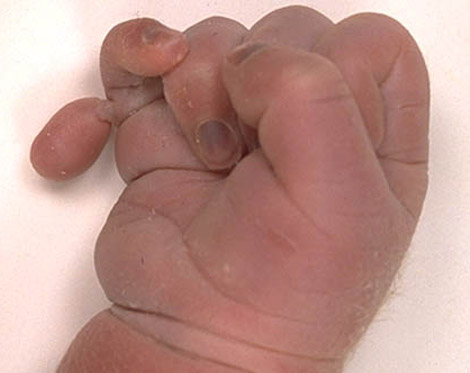
All significant hand signs listed above for Patau syndrome together cover seven out of the nine perspectives of the hand as defined according Multi-Perspective Hand Reading (including hand level 2, 3, 4, 5, 7, 8 & 9).
A summary of the most significant hand sign combinations in Patau syndrome is described here:
Decoding the language of the hand:
hand sign combinations in Patau syndrome!
Hand charts are available for many other diagnostic issues;
start browsing HERE
![]() SCIENTIFIC HAND CHARTS: Introduction
SCIENTIFIC HAND CHARTS: Introduction
Hand charts for Big Five personality dimensions:
• Hand chart(s) for Agreeableness (2x: 1 in 4 people)
• Hand chart(s) for Conscientiousness (2x: 1 in 4 people)
• Hand chart(s) for Extraversion (2x: 1 in 4 people)
• Hand chart(s) Neuroticism (2x: 1 in 4 people)
• Hand chart(s) Openness (2x: 1 in 4 people)
Hand charts for diseases:
• Hand charts for hypercalcemia (1 in 4,000 people)
Hand charts for syndromes:
• Hand charts for arthrogryposis (1 in 10,000 people)
• Hand charts for cri-du-chat syndrome (1 in 30,000 people)
• Hand charts for Down syndrome (1 in 700 live births)
• Hand charts for Edwards syndrome (1 in 6,000 live births)
• Hand charts for fetal alcolhol syndrome (1 in 500 people)
• Hand charts for fragile-X syndrome (1 in 5,000 people)
• Hand charts for Holt-Oram syndrome (1 in 100,000 live b.)
• Hand charts for Kabuki syndrome (1 in 32,000 people)
• Hand charts for Klinefelter syndrome (1 in 1000 males)
• Hand charts for de Lange syndrome (1 in 15,000 live births)
• Hand charts for Marfan syndrome (1 in 5,000 people)
• Hand charts for Patau syndrome (1 in 15,000 live births)
• Hand charts for Prader-Willi syndrome (1 in 15,000 births)
• Hand charts for Rubella syndrome (1 in 100,000 people)
• Hand charts for Rubinstein syndrome (1 in 200,000 births)
• Hand charts for SLOS (1 in 40,000 births)
• Hand charts for Turner syndrome (1 in 2,000 female births)
• Hand charts for Warkany syndrome (1 in 200,000 births)
• Hand charts for Williams syndrome (1 in 14,000 births)
• Hand charts for Wolf-Hirschhorn syndrome (1 in 50,000 b.)
• Hand charts for XXYY syndrome (1 in 30,000 male births)
• Hand charts for XYY syndrome (1 in 1,000 male births)
• Hand charts for 18 deletion syndromes (2 in 40,000 live b.)
NOTICE: Reflexology hand charts are not included in this section because the scientific foundation of any of such charts is actually unknown; nevertheless, you can read more about the fundamentals of such charts HERE.
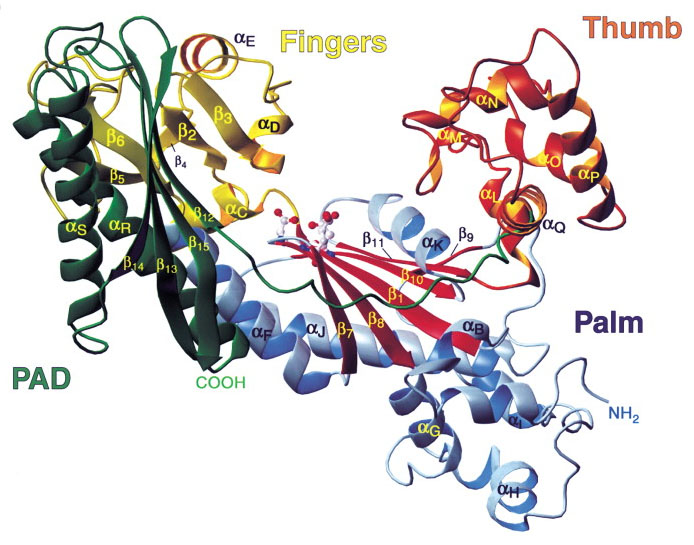
Other charts & maps:
• Fingerprints world map
• Hand reading experts world map
• Hand reflexology charts
